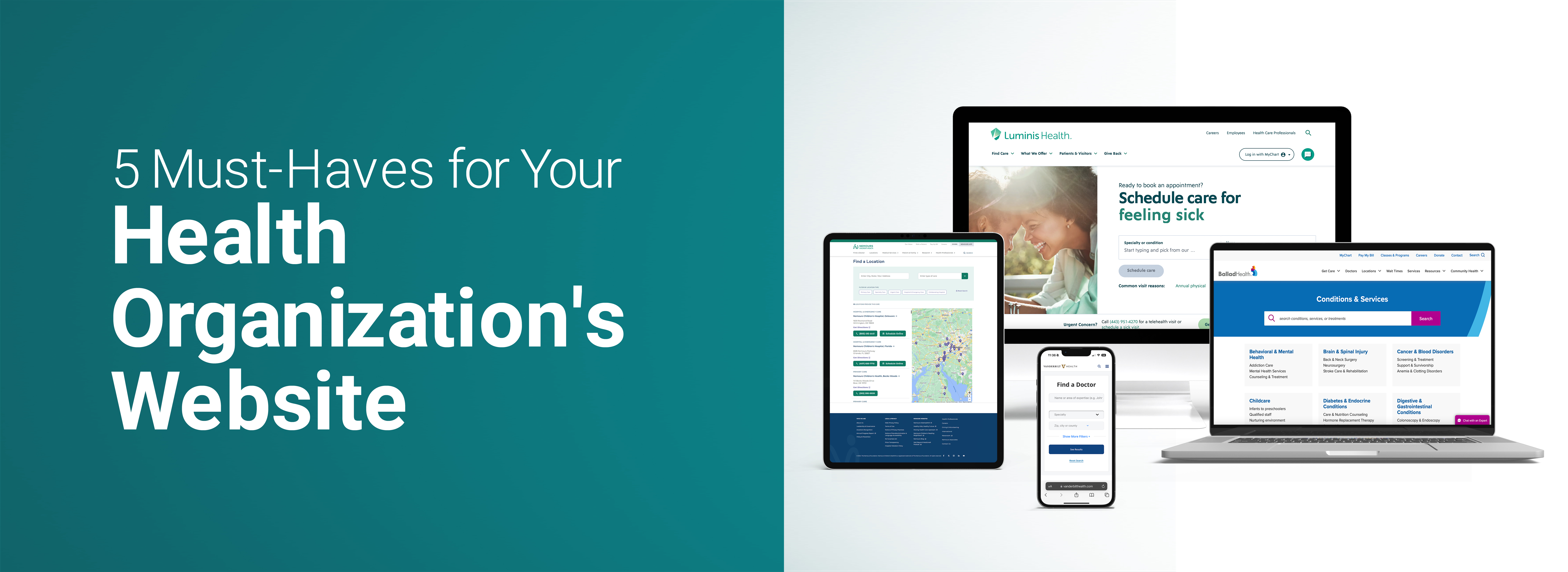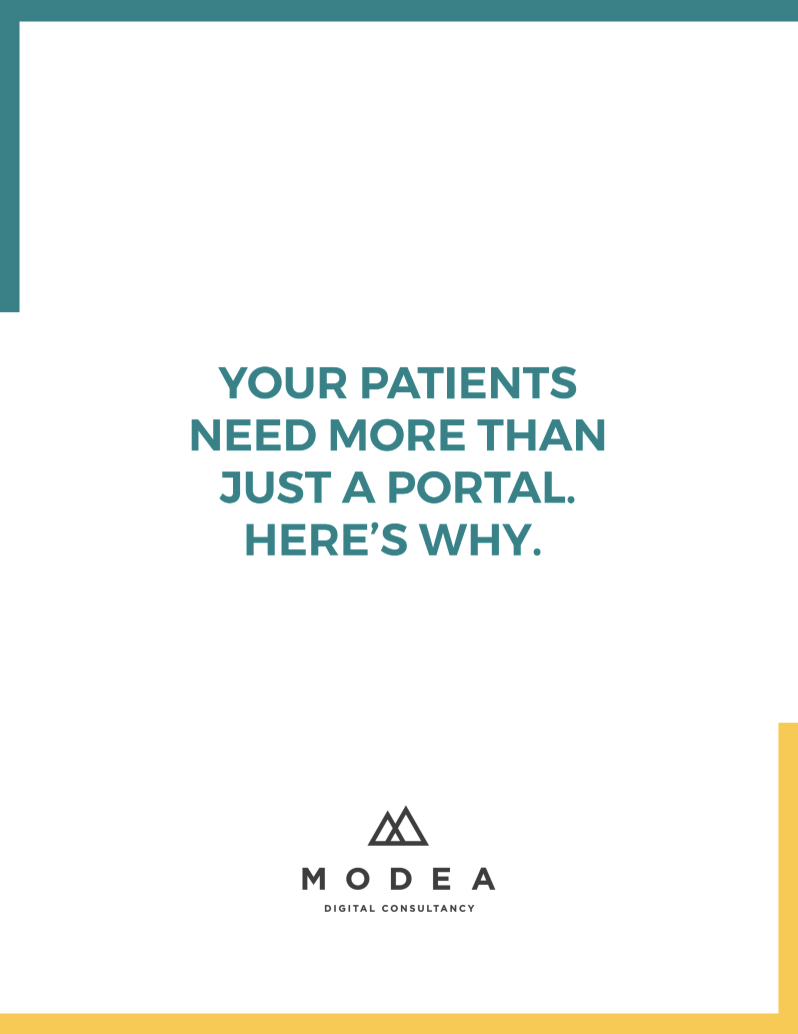
Your website serves as a critical digital resource for both current and potential patients, offering essential information, services, and support throughout their healthcare journey. Many healthcare websites today still lack essential features that hinder the patient’s access to care.
In this blog, we’ll look at what people expect from healthcare websites and share tips for making them more engaging and user-friendly. We’ll draw from industry standards and innovative design ideas to help improve usability and patient satisfaction.
What should be included in a healthcare website?
1. Online Scheduling:
Online scheduling represents a significant leap forward in the healthcare landscape. It changes how appointments are booked, making it more convenient and easy. With online scheduling, patients can book appointments without needing to call during office hours or wait on hold. They can also avoid being transferred to different departments. By adding a simple online scheduling system to your website, patients can see available appointment times and pick one that works for them. This gives patients more control and makes them happier, while also reducing the work for staff. Online scheduling saves time and helps healthcare facilities use their resources better. It also makes healthcare more patient-focused, meeting modern expectations for easy access and convenience.
When considering a scheduling solution, prioritize a design that resembles the user interface and workflow of common consumer brands. This ensures patients can navigate it effortlessly. Ensure that online scheduling provides various search and filter options for easy navigation and booking at the point of intent. It’s crucial to optimize the placement of mobile online scheduling, with clear and convenient calls-to-action that motivate patients to book appointments from their phones with ease.
2. Personalization and Inclusivity:
Customizing website content for each visitor can make the experience feel special and tailored to them. This shows that healthcare websites care about making patients feel seen and heard, instead of using a generic approach for everyone.
Healthcare organizations can use analytics and patient data to customize information and resources for each patient, making engagement better and helping patients make informed decisions. Personalization can also happen without analytics, like letting users turn on location services on the website. This can show nearby clinic locations or give information based on where the user is. Both methods make sure patients get content that fits their health needs and personal preferences, building stronger relationships between patients and providers and leading to better health results.
Inclusivity is linked to accessibility. The Web Content Accessibility Guidelines (WCAG) are global standards for making websites accessible, covering text, images, and sound for everyone. Using clear fonts, easy navigation, and well-designed buttons makes things easier to see. Incorporating typography, navigation, and optimizing buttons enhances visibility. It’s important to stay updated on WCAG revisions for compliance. This includes improving navigability and input assistance. Noncompliance not only risks legal consequences but also impacts SEO, affecting searchability and rankings.
Healthcare websites should be sensitive to different cultures and languages to include everyone. Recognizing that patients come from diverse backgrounds, healthcare organizations need to offer support in multiple languages and provide content that fits different cultures. By doing this, websites can reach more people and build trust with diverse communities. Adding language options, using culturally relevant pictures, and inclusive messages show that the website cares about all patients’ needs. Overall, promoting cultural sensitivity and providing multilingual support can help make healthcare more accessible for everyone and promote fairness in health.
3. EHR Integration:
Adding electronic health record (EHR) systems to your website is a key way to get patients more involved and improve their healthcare. Patients can safely check their medical records and important health info right on the website. There are different ways to do this, and each one helps make a patient’s care journey better. You can show lab results, medication lists, and treatment plans, giving patients a clear picture of their health and how their treatment is going. This makes it easier for patients to be part of their healthcare journey, helps them make informed decisions, and makes the bond between patient and provider stronger.
When your website and EHR system work smoothly together, it makes sharing patient info easier and helps healthcare providers coordinate care better. They can securely share information and work on treatment plans, reducing mistakes and unnecessary tests. This makes things easier for healthcare teams and improves communication, leading to better care and happier patients.
In short, adding an EHR system to your website is a strategic move to modernize healthcare and prioritize patient care.
4. Patient Education and Empowerment:
Offering a robust health library and educational resources on your website is instrumental in empowering patients to take an active role in managing their health and well-being. This comprehensive collection of information serves as a go-to source for patients seeking reliable guidance on various health topics and medical conditions. It provides patients with trustworthy information they can rely on. Curating a diverse range of resources, including informative articles, engaging videos, interactive tools, and self-assessment quizzes, ensures that patients have access to a wealth of educational materials tailored to their needs and preferences.
Educational content in multiple formats caters to different learning styles and enhances accessibility for a broader audience. Clear and concise explanations coupled with user-friendly navigation make it easy for patients to explore relevant topics and find answers to their health-related queries. The organization of this content is also important. Organizing the health library into categories or sections based on specific health concerns or areas of interest further enhances usability and ensures that patients can quickly locate relevant information.
Make your website a trusted source of health information by providing educational resources that are informative and engaging. When patients have health literacy, they can make informed decisions about their well-being, adopt healthier habits, and take an active role in their healthcare journey. A comprehensive health library is a valuable tool for promoting patient education, improving health outcomes, and encouraging proactive healthcare management.
5. Intuitive Search Functionality:
Improving your website’s search experience is more than just adding a search bar. It means making search intuitive, anticipating and meeting patient needs. One way to do this is by using auto-fill suggestions, which suggest keywords or phrases as users type, streamlining the search process. You can also use smart search algorithms to improve result accuracy, helping users find information fast and easily.
Adding advanced filters based on location, specialty, and services offered helps patients refine their search results. This way, they can narrow down their options and find the most relevant content, providers, or services for their needs. A well-designed search interface with clear navigation and prominent calls-to-action makes it easy for users to navigate the website and find the information they need. This intuitive search functionality improves user satisfaction and engagement, leading to a positive user experience and better health outcomes.
Conclusion
Improving your healthcare website with features like online scheduling, personalization, EHR integration, patient education, and intuitive search will give patients a better digital experience. By investing in these key elements, you not only enhance accessibility and engagement but also foster stronger patient-provider relationships. Ultimately, this investment drives better health outcomes for all.


